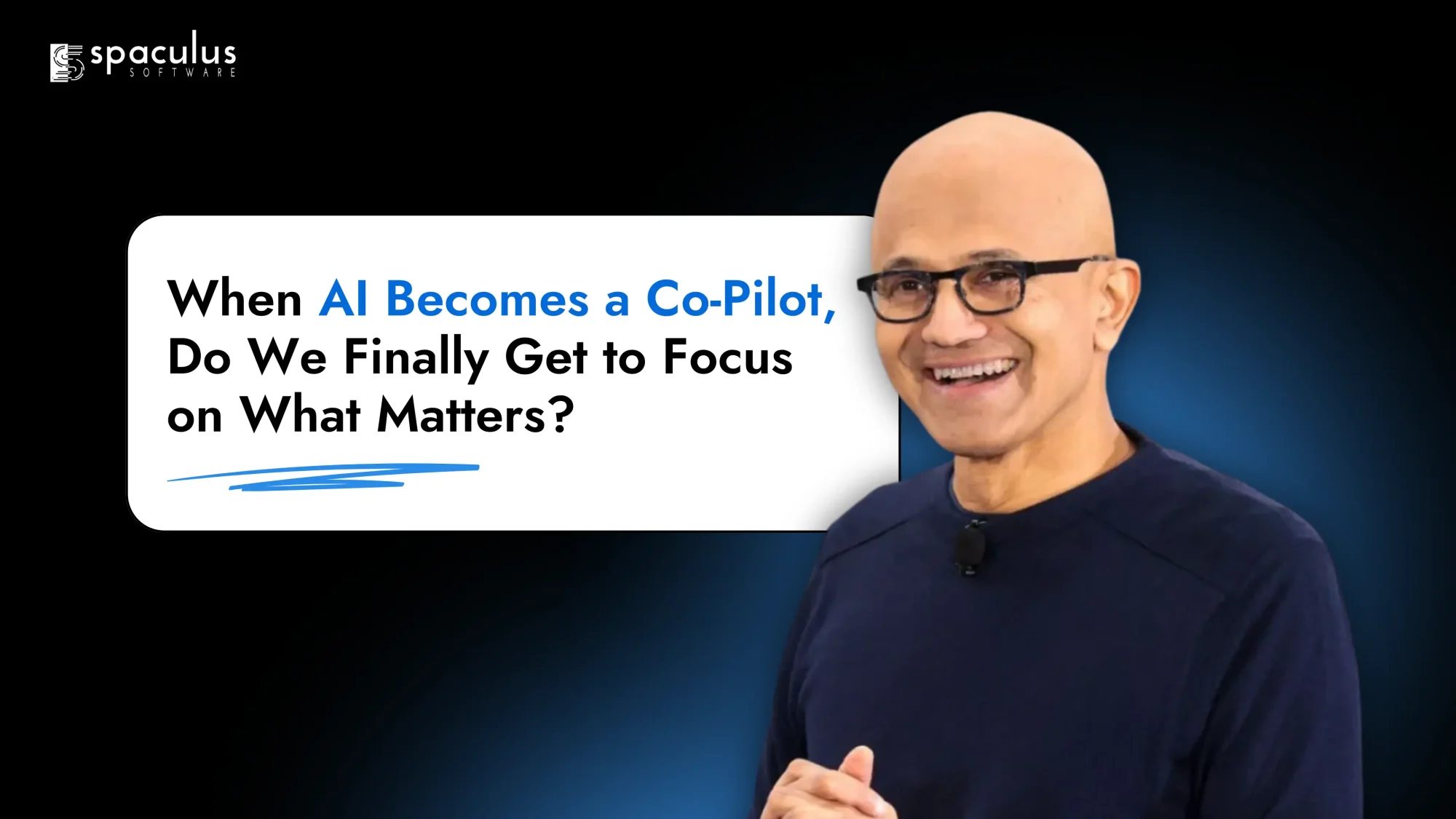
AI isn’t just a product update at Microsoft.
It’s a full rewrite of how software is built, sold, and used, starting at the infrastructure level.
Under Satya Nadella’s leadership, Microsoft isn’t trying to win the AI race with louder models. It’s doing something sharper, turning AI into an invisible productivity layer that touches code, cloud, compute, and even healthcare systems.
And it’s not theory. It’s already happening.
While most tech CEOs are still stuck debating GPT benchmarks, Nadella has a different filter:
“If AI isn’t creating real-world surplus, community by community, country by country, then we’re just wasting energy.”
This framing matters.
It grounds AI in a clear purpose: economic utility.
Microsoft’s AI investments are being judged not by valuation hype, but by how much time, money, and creative energy they free up, at global scale.
Whether it’s helping a physician spend less time on clerical work…
Or helping a software engineer become a system architect, not a code pusher…
Microsoft’s view is bold: AI’s value must show up in GDP.
Nadella made this sharp comparison:
Just like SQL abstracted databases, LLMs are abstracting reasoning.
They’re not replacing humans. They’re upgrading the interface between humans and software.
This means:
The opportunity is not in replacing apps.
It’s in creating a new layer of AI-native applications on top of these models, a layer that understands entitlements, context, tool access, and memory.
Microsoft is already embedding this model-plus-scaffolding pattern inside GitHub, Windows, Office, and Azure, making everyday tools more intelligent without making them harder to use.
This is where Microsoft is years ahead.
While most AI startups are still shipping demos, Nadella is focused on systems integration — making AI useful inside messy, real-world workflows.
He gave the example of Indian farmers using a WhatsApp chatbot (powered by LLM + IndiaStack) to access government subsidies in local languages.
That’s not a lab experiment. That’s real-world change.
In another case, hospitals using large language models to speed up discharge paperwork are not just saving time, they’re reallocating physicians’ attention to patients, not forms.
This is the playbook:
That’s not about futuristic AGI. That’s basic respect for human time — at enterprise scale.
Nadella doesn’t think the main challenge is compute power or regulation.
He believes it’s organizational change.
“We’re not just inserting AI into workflows. We’re redefining what the job even is.”
That’s why Microsoft is investing in more than models, they’re investing in deployment engineers, training layers, and co-pilots that don’t just offer tools, but reshape roles.
From “typists” to “builders.”
From “developers” to “architects.”
From “project teams” to “full-stack product pods.”
The real transformation is not in what the software can do — it’s in how teams are redesigned around that capability.
If you’re a CTO today, Nadella’s model gives you a clear path:
And most importantly…
Nadella believes we’re entering a phase where tools are becoming intelligent teammates — and the companies that win will be the ones who build new kinds of interfaces on top.
If you’re building today, consider this:
While many in Silicon Valley are chasing headlines or valuations, Nadella is asking harder questions:
This isn’t conservative thinking.
It’s long-term thinking.
And that’s what’s redefining the industry.
Not louder announcements, but deeper, more responsible infrastructure.
“If we’re not creating social and economic surplus, we shouldn’t be building this.”
— Satya Nadella
That’s the difference.
Nadella isn’t trying to build the smartest AI.
He’s building the most trusted, useful, and integrated one, from cloud to co-pilot.
And in doing so, he’s not just shaping Microsoft’s future.
He’s reshaping how tech earns its place in the real world.